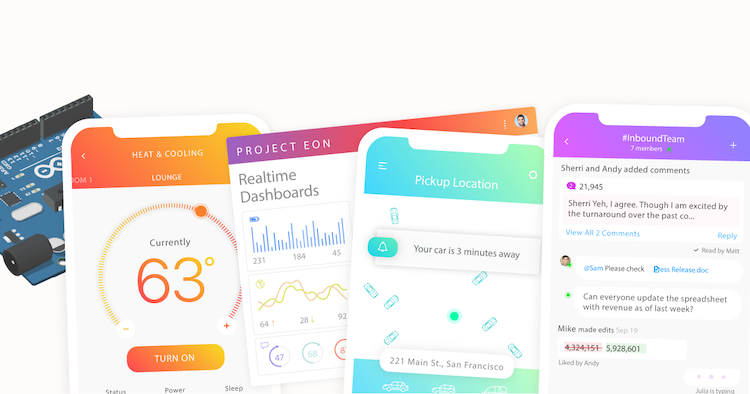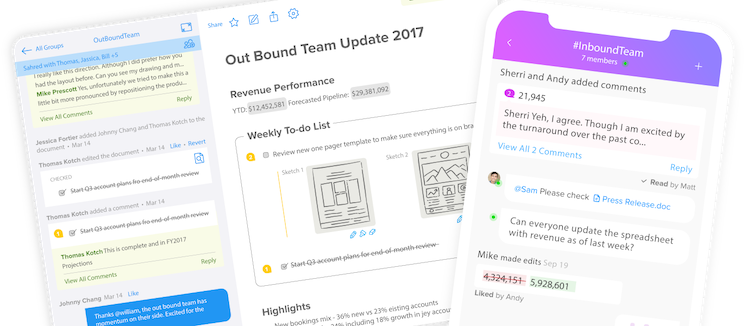People expect realtime collaboration and chat as core to every online and app experience
Worldwide, people are rapidly transitioning to online and mobile experiences for remote work, play, learning, and health. Companies are adopting a “Remote First” principle wherever possible to prioritize collaboration, remote work, and productivity above all else. However, remote first extends beyond IT configuration and HR policies. Modern software design is also taking a remote-first mindset to ensure that users can collaborate and share within each app, in real-time, instead of relying solely on screen sharing and document attachments.
Time for a MarTech health check
Is your MarTech stack fueling growth or wasting budget? Spot the issues and fix them fast with this free guide from the experts at ConsultMyApp.
Download nowA decade ago, “mobile first” was the rallying cry for software designers, ensuring that all business and consumer apps were smartphone ready. Today, remote first is quickly the top priority for app design, since without it, users are finding it extremely hard to collaborate in a remote world. The most obvious example is Microsoft Word vs Google Docs. MS Word is the undisputed feature king, and yet Google Docs has experienced fast growth as teams have moved into remote collaboration, willing to sacrifice Word’s bells and whistles for realtime remote editing. But this trend goes beyond doc editing: modern apps of all categories are moving quickly to Remote-First features, from eLearning and telehealth, to customer support and entertainment apps.
Remote-first designed apps have a few common key themes. They include fully-featured in-app chat, synchronization of documents, realtime updates and status, and the ability to see changes as they happen in realtime. Users should be able to see when their collaborators are online, and “where” they are within each app. Remote-First software must consider not only 1:1 collaboration, but also what happens when potentially millions of users are in the same “virtual spaces”. All these collaboration features generate more data that needs to be secured and protect users’ privacy.
To stay relevant, software companies are reprioritizing their 2020 roadmaps with a “remote first” mindset.
Enhancing Service and Customer Experience of Remote Products
In-App chat is the gateway to almost every Remote First experience. Online chat is a critical component to remote communication in all aspects of work and personal life, and chat has evolved since the early days of AIM and Skype. Today, online chat is now the primary way many people communicate when online, from Slack (enterprise) to Discord (gaming), within dating apps, online gaming, Telehealth, and even in large online crowds during live streamed events and concerts.
In fact, findings from our recent “State of Chat” survey revealed the importance of chat as a key part of most app experiences. More than 85% of those surveyed use online chat features every day, with 75% of people using chat a few times a day, and 62% using chat fairly often or all day long. Whether ordering food via delivery app or conducting a telehealth visit, having a seamless touchpoint for customers via chat is a critical business service in the new world of remote realtime interactions. 54% of respondents expected businesses to provide some form of chat service for sales and support, and 26% of respondents feel more engaged with the apps they use because of chat. This may have downstream effects on key business metrics such as user retention and part of a brand’s omnichannel strategy for customer service, marketing, and sales.
We also found that users don’t want to switch in and out of their apps or keep logging into different chat-specific services like Skype and WhatsApp. 76% would prefer to chat in the application they’re using vs. a stand-alone/separate solution. 36% of respondents say having chat in an application makes them more likely to try it for the first time.
Build a Digital Product that Customers Want
Users expect in-app chat features to operate like the chat apps they’re already used to. Design and features matter. Beyond 1:1 and group chat, users expect to be able to catch up on missed messages, message read and sent receipts, and rich media support. And in-app chat is just the gateway. Building remote-first software must extend beyond chat, proving realtime in-app updates (like locations of your food order or repair person), ability to manipulate documents in realtime, see the status of others online, control devices remotely; the list goes on.
But chat is a good place to start.












